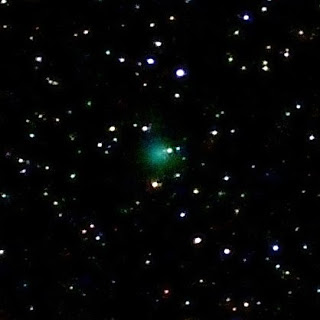Last evening I caught a comet 45P (Honda-Mrkos-Pajdusakova) near the horizon (altitude <10 degrees).
It seems that comet's magnitude is about 7.5m.
Date/Time: 2016-12-30 ~17:23(UT+2)
Place: Kyiv
It seems that comet's magnitude is about 7.5m.
Date/Time: 2016-12-30 ~17:23(UT+2)
Place: Kyiv
Crop 5x5 degrees
Canon EOS 600D + EF 50mm F/1.8 @2.5; 10 frames by 2s, ISO=800; Processed in DSS[20 offsets, 20 darks] + FITSwork4
Annotated picture (by nova.astrometry.net):





















































